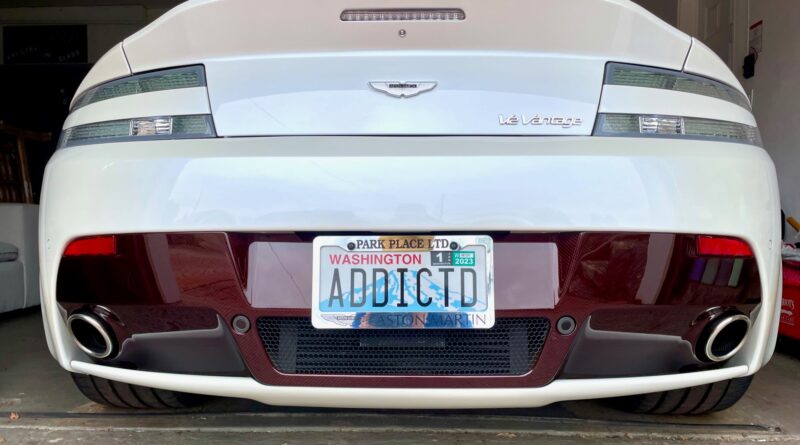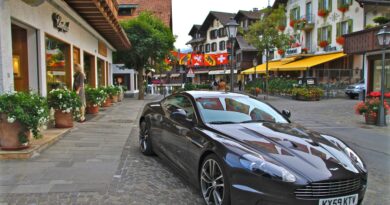Ford vs Ferrari – Not!
Actually, it’s Honda vs. Aston Martin. What?! Not much of a parallel there, you say. But, wait a minute… maybe it’s not that farfetched. After all, it’s a big, major car manufacturer against an expensive, boutique niche builder. Honda is known for great quality and world-beating racing engines. Aston is known as a quirky, 117-year-old, ultra-luxury British car brand most famous for fast, sexy cars ala the coolest secret agent ever, James Bond. Honda is a bulwark of the Japanese car industry. Aston Martin has been in or near bankruptcy more than half a dozen times over its checkered history. Honda sold about 4 million cars in 2022; Aston not quite 6,500. From an economics and market share standpoint, this is absolutely another David vs. Goliath.
But this is not leading where you think. This isn’t about racing, or grudges, angry leaders or investors. This is actually my own comparison of sports cars built by these two – they’re not remotely close. The 2002 Honda S2000 is a special edition convertible, built to honor the company’s 50th anniversary and its founder, Soichiro Honda. The Aston is a 2012 V12 Vantage, a car conceived and built during a momentarily lapse of good sense. So, what drives this comparison? Only the fact I own an example of each and am fascinated at how dissimilar they are.
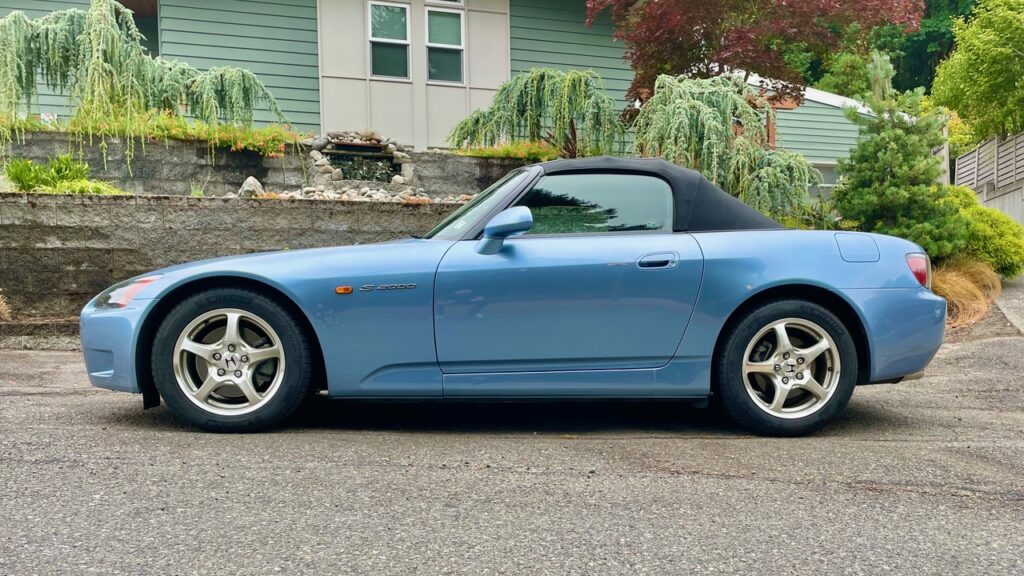
The driving experience in each is sporty, but from there they couldn’t be more different. The Honda is lighter, smaller, makes do with an innovative 2 liter, 4 cylinder engine that develops 240 hp and 153 ft-lb of torque. Respectable numbers, especially in 2002 when breaking the 100 hp/liter milestone for a production car was a real feat. The Aston doesn’t do that and it was built ten years later. The Honda is a momentum car, meaning it doesn’t build speed at a breakneck rate, but it’s nimble and can carry speed through a corner like a go-kart. It claims a top speed of 151 and a 0-60mph time of 5.4 seconds. Based just on feel those numbers seem a little exaggerated to me. Still, it’s a great car – well-balanced and quick, even though it carries a driver beware tendency to lose the rear end if you’re not attentive. It’s just quick enough to keep your interest, and it’s fascinating to re-experience a greater sensation of speed that is so prevalent in sports cars from the 50s and 60s. I swear I’m doing 70 only to look down and see I’m doing 60; or feel I’m doing 45 when I’m doing 35.
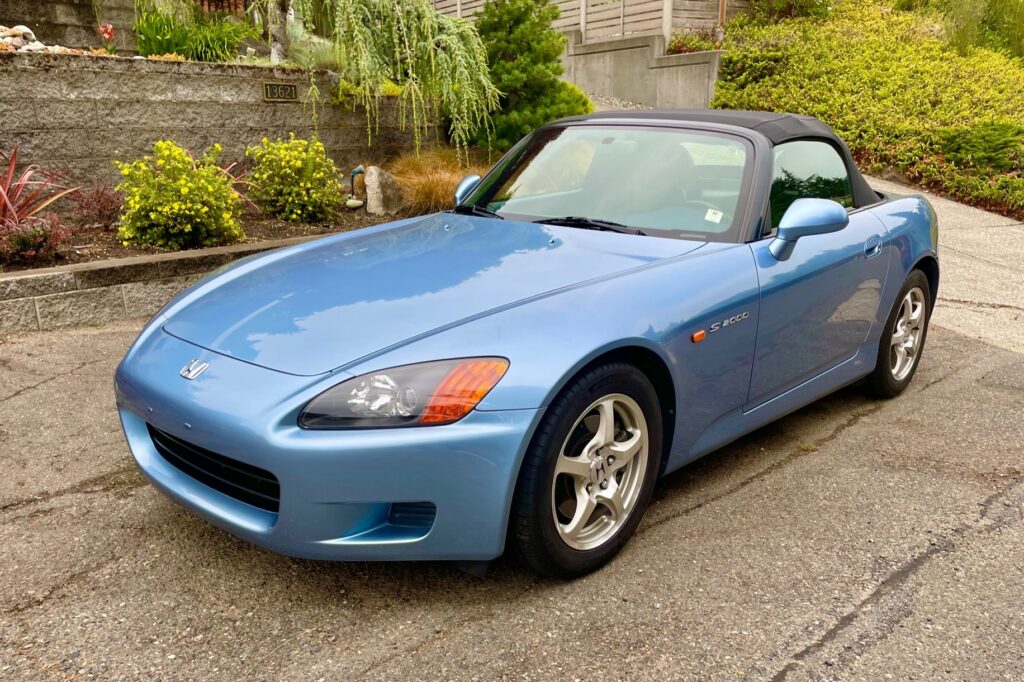
The Aston is just a Jekyll and Hyde brut. It’s got a 5.9 liter V12 that, with a little extra tuning help, now generates a whopping 565 hp and 465 ft-lb of torque wedged into an engine bay intended for a small block V8. I tell people it’s like putting a V12 into a Porsche 911 because the wheel bases are about the same. It’ll do 0-60 in 3.7 seconds and tops out at 205 mph. It can be very docile around town, but if you mash the right foot pedal, it will scare the crap out of you. It is a British version of an American hot rod. It’s both incredibly beautiful and luxurious with its all leather interior, and viciously dangerous. Beware; this is a well-groomed pitbull that bites.
It also possesses that insular sensation of speed common of modern sports cars. The one where you look down and are astonished to see you’re doing 130 mph when you swore you were only doing 85 (my wife actually did this, and it shocked her. I got a good laugh out of it!). While it’s wonderful to feel so safe at such high speeds, it’s a completely different vibe from what the S2000 is about. The Honda is a harkening back to a purer, simpler driving experience; The V12V is all about extracting the maximum from a GT sports car while maintaining a luxurious presence. Driving it is an occasion all on its own.
They both sport manual 6-speed transmissions, but again, they are completely different in touch and feel. The Honda has a fun, short throw gearbox with a short travel third pedal to match and the smoothness inherent in a hydraulically powered clutch. It’s a slick combo, and makes quick shifts up and down the box, especially with a little heel-and-toe, an intoxicating amount of fun. The pedal box, like everything in this car, is a little cramped and the pedals are a little slipperier than I would like. But the ratios are really close together, so much so you can short-shift to 6th by 35 mph at 2,000 rpm under normal conditions. The kicker here is the redline – it’s a whopping 9,000 rpm and it screams mightily on the way there.
Honestly, I rarely take it above 6,000 but it’s from there to 9k that changes this little screamer into a much more earnest pavement gobbler, assuming you want to explore the virtues of the VTEC variable valve timing technology that Honda pioneered. I confess to having a hard time screwing up the courage to regularly tap out to 9,000 for fear I’m going to hurt the poor thing. I know it’s not true because Honda and this car have bulletproof reputations. Still, it’s kind of a sewing machine sort of bomber, and I don’t want to punish it or my pocketbook at some point in the future.
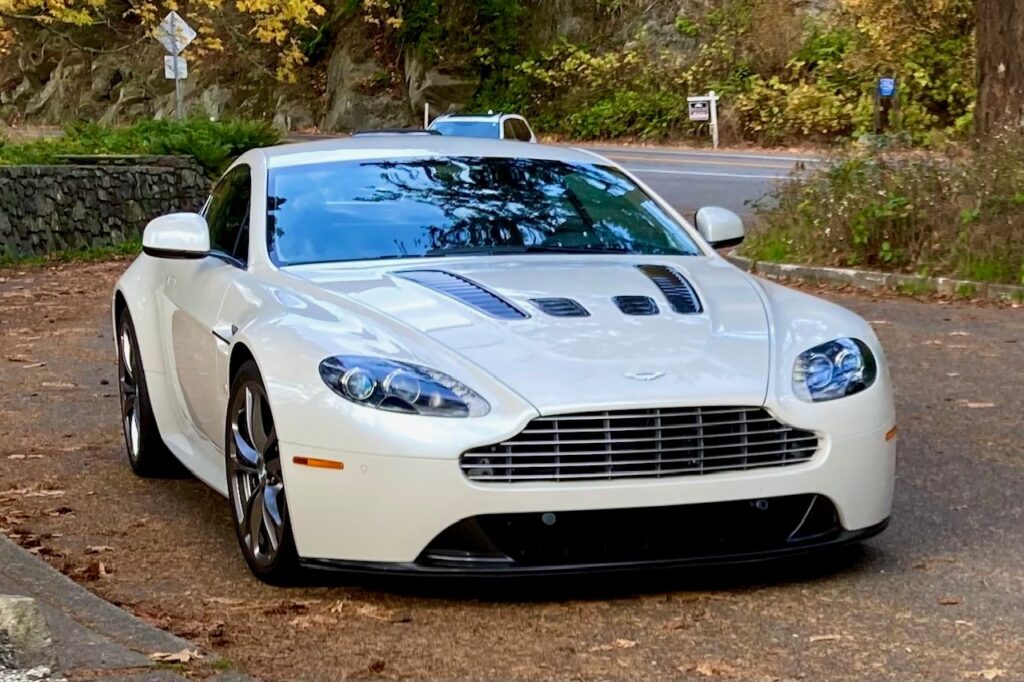
The Aston also has a great gearbox made by Graziano. Yes, that’s Italian. But the clutch throw is longer my as is the gearbox, in the more traditional British sports car fashion. It’s not long by any means, but noticeably different from the Honda and more mechanical. No hydraulics here, but without doubt a great performing, smooth gearbox. The thing about this one, though, is you need to know how to work a traditional gearbox to get this baby humming as it was designed. Heel and toeing is a prerequisite. You know how to do that and rev match and this is a very smooth, high performance, slick, rewarding transaxle.
The new twin-plate clutch and super lightweight flywheel make the shifts even more responsive and the engine spool up noticeably quicker. One of the things I like best about it is the beefy shift knob. Made from billet-machined aluminum it fills the palm of your hand, tactilely letting you know you’ve got hold of something serious. Sometimes, when the gearlube is cold, you need to double-clutch to go from 1st to 2nd or the gears may grind. Be patient, let this thoroughbred warm up and everything will be just fine.
Neither of these cars are blessed with an abundance of noise deadening. They are both loud, but again in different ways. That screaming little 4-banger, while smooth and sophisticated for its type, is nothing like the ultimate smoothness and growl of probably the pinnacle of engine design concepts – the V12. The Honda is loud at freeway speeds, turning 4 thousand rpm while still not quite hitting 70. It’s got a bit of high performance, high frequency edge to it, one I would not want to be stuck in for hours on a road trip. I have the most fun running up and down through the gears on curvy local roads.
The Aston, on the other hand, doesn’t hit 3,000 rpm until 85, and just clips 3,500 rpm at 100. It redlines at 7,100. It’s got a vicious exhaust note on a whole other visceral level. You absolutely know you’ve got hold of an animal when you hear that exhaust! There is nothing like a V12 under acceleration or high revs and Aston Martin is masterful at extracting wild, deep, sonorous notes from them. It’s so good, some people buy an Aston just for the sound of the exhaust. No, I’m not kidding.
Couple that great, low end exhaust sound with a luxurious and cozy but not cramped interior and you’ve got the makings of a great road trip. And notably, both cars can fit golf clubs in the trunk. The Aston, though, has the edge on cargo space with the ability to fit 2 sets of clubs and a couple carry-on bags in the back, along with a couple overnight bags behind the seats. Did I mention these are both two seaters?
Finally, we’ve segued to the interior where things are also radically different. I’ve never really been enamored with Japanese car ergonomics. The seats are well-bolstered, but again, if you’re over 6 feet and 200 pounds, this is going to be a very tight drive. It’s like most things Japanese from this era – made for the smaller, more slightly built Japanese physique. I end up feeling right on the edge of comfortable because, well, I’m right at the edge of 6 feet and 180 lbs. For me, the instrumentation and placement always take getting used to, and for someone used to American and Euro-style dashes, they just seem gimmicky and strangely organized. All the controls surround the steering wheel. The cruise control and rear window defrost switches are partially obstructed by the steering wheel. Radio control buttons are on the dash to the left, require different tactile movements, and are not immediately intuitive. That said, they’re fine once you figure them out – it just requires some thinking.
Yet, here I am, with a little, twenty-plus year old Honda sports car. The S2000 is ten years older than the Aston, the switch gear is cheaper, the layout completely driver-centric. Most of the controls are within the reach of fingers with hands still on the steering wheel. It’s clever if simple. There’s no bluetooth or satellite radio and the stereo is just so-so. I’ll be upgrading that soon. The gas cap release is also hidden in the strangest of places and is, like so many things Japanese, somehow counterintuitive to western minds. I shake my head every time I have to fill up. First, it’s in a strange spot. Then, it’s got what one would swear is a push button release, but no, you have to pull the button to release the cover plate. See? Counter-intuitive.
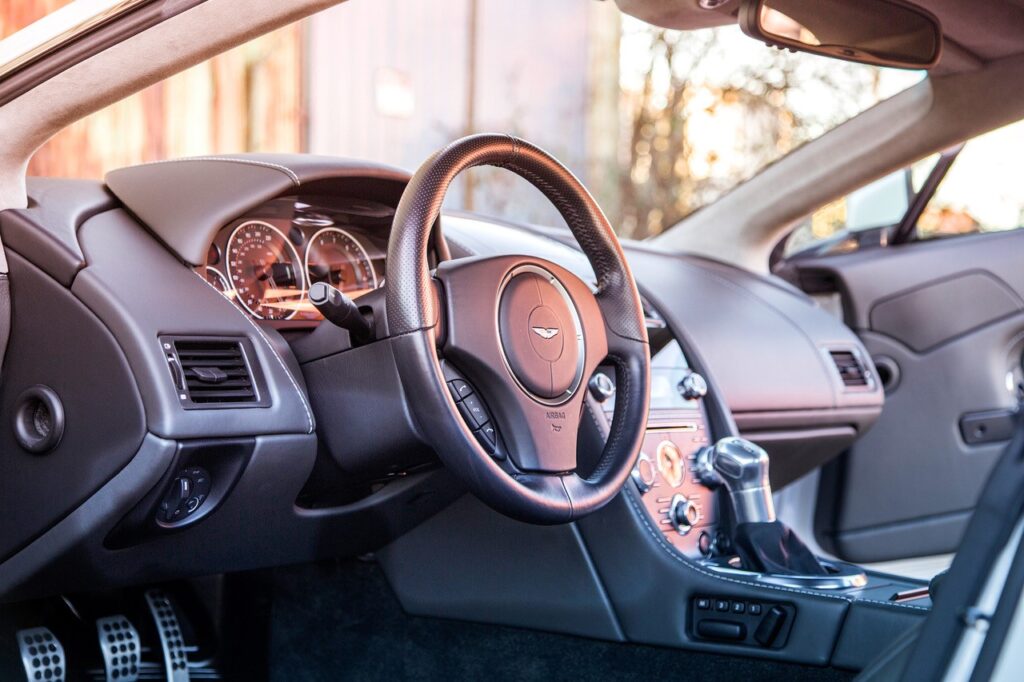
The Aston is typical of the British mindset – lots of controls and switches to raise the cool factor, so it seems. Most of everything is on the center dash waterfall or near the forward part of the console. Because it’s ten years younger, it has a lot more features and capabilities.
The S2000 is a basic sports car more for the purist, harking to the days when sports cars were straightforward – get in and drive. The Aston needs to cater to the tastes and the demands of the more discerning, yet still deliver scintillating performance. The dash philosophy behind each car is so different that when I go from one to the other I need to sit and re-familiarize myself. But, each hits its target admirably. Must be why I own them (he said, patting himself heartily on the back).

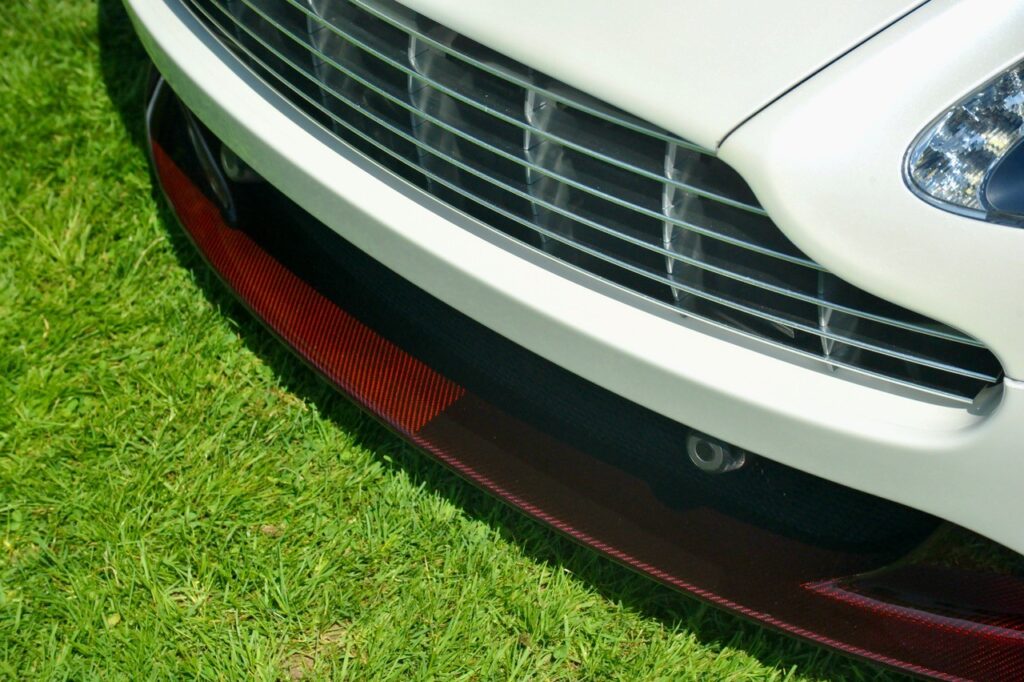
Finally, the first and last thing you see of a car – the exterior. One of the first requirements of any car I want to own – it’s got to be good-looking. It’s got to wow me in some way and usually, more often than not, do it subtly. They have both turned out to be timelessly attractive vehicles. They have classic lines, utilize classic design themes and proportions, and exude an understated simplicity of shape and form I believe will always stand the test of time.
I’m not a fan of today’s busy body designs – your eye is bouncing all over the thing, from one busy, useless little feature to another. It’s like they’re so unsure of themselves that someone feels lots of eye-catching details are required to keep an admirer’s attention. My thought – do it right and use only what’s necessary. So, as you might expect, I’m a big fan of 1960s and 70s car design. Simple, with pure forms, wonderful shapes, minimal, well-thought out details. They are designs that flow and are resolved.
So, which car do I like the best? It depends. Overall, I’m a solid, irreversible Aston Martin fan. The Aston is a great GT. I love its combination of luxury and performance. Truly a great car. You can find out more by reading The Aston Martin V12 Vantage post. But, I love the little Honda because it’s a convertible and that gearbox is a ton of fun. It’s as basic as sports cars get these days, and that’s a good thing. Simple fun. So they both have their place. Must be why I still own them. Now if I could only afford to buy another fun toy… ahh, the joy of pursuing dreams.

